I M Sheldon
Uterine diseases in cattle after parturition
Sheldon, I M; Williams, E J; Miller, A N A; Nash, D M; Herath, S
Authors
E J Williams
A N A Miller
D M Nash
S Herath
Abstract
Bacterial contamination of the uterine lumen is common in cattle after parturition, often leading to infection and uterine disease. Clinical disease can be diagnosed and scored by examination of the vaginal mucus, which reflects the presence of pathogenic bacteria such as Escherichia coli and Arcanobacterium pyogenes. Viruses may also cause uterine disease and bovine herpesvirus 4 (BoHV-4) is tropic for endometrial cells, causing a rapid cytopathic effect. The elimination of pathogens by the innate immune system is dependent on pattern recognition receptors binding pathogen-associated molecules. Uterine epithelial and stromal cells express receptors such as Toll-like Receptor 4 that binds E. coli lipopolysaccharide. The infertility associated with uterine disease is caused by damage to the endometrium and disruption of ovarian cyclic activity. Bacteria modulate endometrial prostaglandin secretion, and perturb ovarian follicle growth and function. Understanding the molecular basis of uterine disease will lead to novel approaches to treating infertility. (C) 2008 Elsevier Ltd. All rights reserved.
Citation
Sheldon, I. M., Williams, E. J., Miller, A. N. A., Nash, D. M., & Herath, S. Uterine diseases in cattle after parturition
| Presentation Conference Type | Conference Paper (published) |
|---|---|
| Deposit Date | Nov 11, 2014 |
| Volume | 176 |
| Pages | 115-121 |
| DOI | https://doi.org/10.1016/j.tvj1.2007.12.031 |
| Public URL | https://rvc-repository.worktribe.com/output/1431003 |
